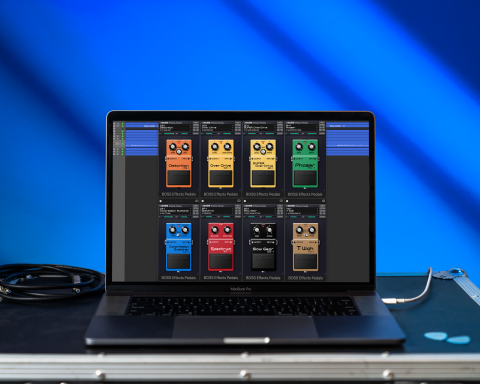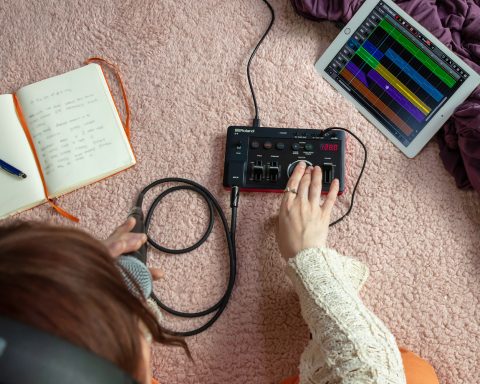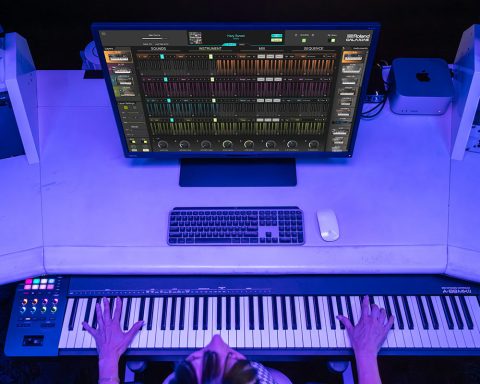Good things come in pairs goes the ancient proverb. In the case of a trio of instruments with histories tracing back to the TR-606, they sometimes arrive in threes. The TR-06, Roland Cloud’s TR-606, and the TR-6S give fans of classic drum machines triple the reasons to celebrate. Still, the “double happiness” principle applies to the TR-06’s creators. We had the chance to speak with the engineering duo behind this powerful instrument.
A Tale of Two Engineers
Hiromu Nagasawa is a newer face at Roland. He shifted his career from a major car manufacturer to join the company. Says Nagasawa, “My first assignment was fine-tuning the analog circuit for the SYSTEM-500. I thought, ‘Wow, can I get paid for my dream-come-true job?’”
His colleague, Akihiro Nagata, is a Roland veteran with a wealth of experience on projects like the JUPITER-X and the AIRA series.
The pair is a study in complementary parts. Nagasawa reflects quietly before delivering his answers. By contrast, Nagata bubbles with infectious energy. His hands gesture animatedly when describing knob controls and effects parameters. Both are passionate engineers determined to expand the legacy of Roland instruments. Indeed, the fire that drives these two come from a desire to innovate, rather than re-create
Getting Started
How did you approach starting this project, and what made you so excited to work on the TR-06?
Hiromu Nagasawa: To start designing TR-06, I examined the circuit diagram of TR-606 and thought, “This is insane!” The quality of snare and toms of the TR-606 are equal to the TR-808, and the characteristic hi-hat is one of a kind.
It wasn’t only that the 606 was an affordable version of its TR predecessors. The original designers packed everything into this size, long before I was born. I recommend the TR-06 as a first rhythm machine for users who are new to drum machines.
The Musical Math of Probability
Tell us a bit about the TR-06 probability functions and how they work.
HG: Trigger probability is a fairly traditional concept. With sub-step probability, what happens is sometimes kind of “Trrrrr” sound, but not always. That’s sub-step probability. The master probability affects all the probability. If you set it to -100% nothing happens with the probability notes, but if you set it to +100% all the probability notes and sub-steps become valid.
Does that mean a user can leave the TR-06 playing and unique musical events will occur continuously?
Akihiro Nagata: That’s the sum result of probability. First, we set the probability for each note and each sub-step as Nagasawa mentioned. At 10%, the sub-step phrase occurs at a low rate.
As you turn up the master probability it sums those occurrence rates by every note. As you do, the probability increases so the music becomes more exciting. It gives it a very human feel.
"As the probability increases, the music becomes more exciting. It gives it a very human feel."
-Akihiro Nagata
HN: We wanted to increase the potential of the TR-606 and add all the exciting things we can do now. Functions like these gave us a reason to make the 606 again.
The Shape of Sound
Moving on from probability, let’s talk about sound-shaping. How are these TR-06 functions different than the original TR-606?
HN: What we wanted to do, of course, is keep the authenticity of the 606. We changed the hi-hat algorithm and added more of a “clipping” sound. This made the hi-hat more “real” and more “606.” We also added a feature where the hi-hat changes decay with the tempo. This means the hi-hat sound gets “crispier” as the tempo increases.
From the bottom up, we tried to make the 606 very musical. I love the TR-8. I wanted to combine the TR-8’s functionality with the portability and authenticity of the 606. That was the sound-shaping concept. This is a very small drum machine that does things the TR-8 can.
Vintage Meets the Future
How similar does it sound to a vintage TR-606? Is everything set at default or is a little bit more pumped up?
HN: We created the sounds based on a coworker’s actual TR-606. It was our model. I listened to the sound of his 606 all day for a month to develop the new hi-hat.
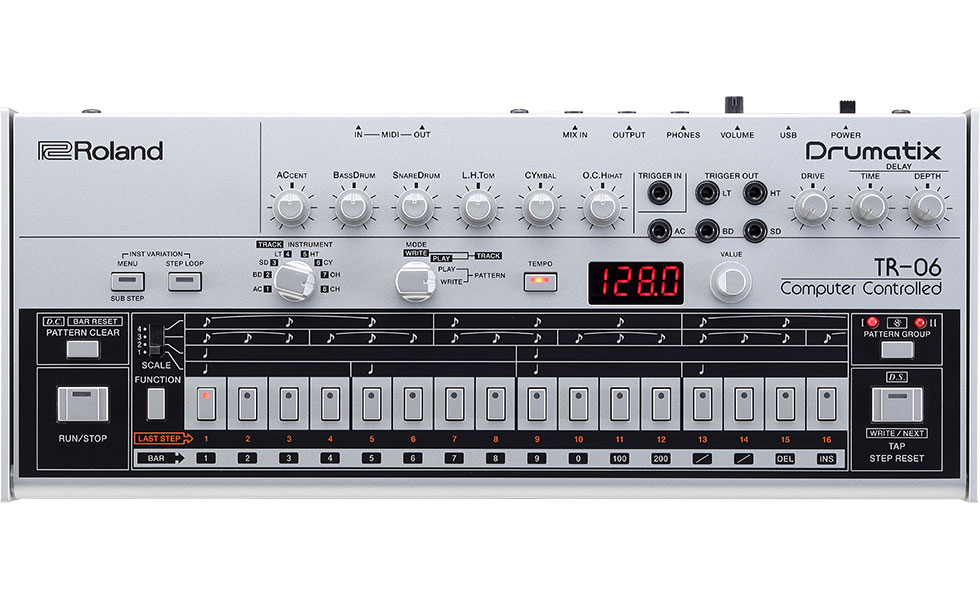
You can make the TR-06 sound like a vintage TR-606. However, there is also an evolution.
HN: That’s the new AIRA flavor.
AN: They are both based on the same ACB model designed by a key engineer of ours. The 606 was originally created by him during TR-8 development. We modified it.
"From the bottom up. we wanted to make the
TR-06 very musical. I wanted to combine the TR-8's functionality with the portability and authenticity
of the 606."
-Hiromu Nagasawa
Friendly Competition
What are some differences between the TR-06 and the Roland Cloud TR-606 plug-in?
AN: While the viewpoint may be a little different, it’s basically the same. The things that are a little different are the tuning of the sounds. Those depend on the particular hardware.
HN: We have a repository of information we can all draw from.
The team that works on a product puts their kind of sonic kind of stamp onto it.
AN. Sometimes we have some competition. [Laughs] Occasionally, we try different things from each other. We have to improve every time.
Powerful Triggers
The TR-606 is popular in mod/circuit bending culture. Certainly, the trigger inputs on the TR-06 are a powerful feature that will delight that crowd. Tell us about them.
HN: At first, there were just input and output triggers. I wanted more, so I updated them to give increased options. It’s kind of my hobby. On the TR-06, the trigger outs are on the line on the top panel. That is a nod to the geeks who loved and modified the TR-606 by adding individual outputs by themselves.
"If you dive into the trigger input and output functions of the TR-06, it's a big world. You can control outside modules to create very rich music."
-Akihiro Nagata
If you connect any of those trigger outs to the trigger in, it creates unpredictable patterns. The twists for modern music are random mute of the sounds in the pattern, sub-step rolls, and effects.
AN: It’s a bit complicated, but if you dive into the trigger input and output functions of TR-06, it’s a big world. You can control outside modules to create very rich music using these input and outputs.
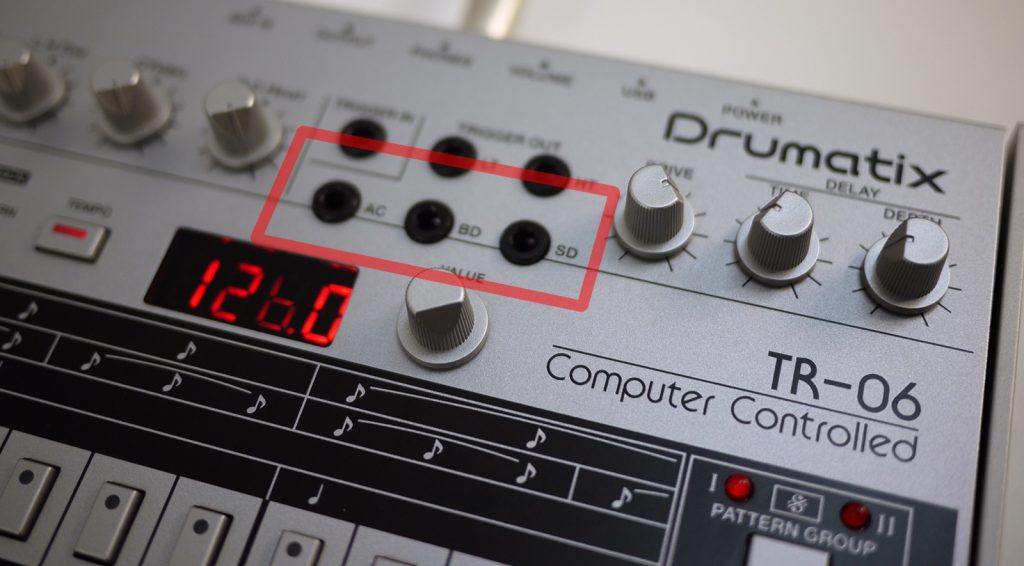
Choosing the Right Effects
It will be exciting to hear what people do with these new options. On another topic, would you describe the TR-06’s onboard effects?
HN: All the DSP effects are based on previous products. The new feature is the macro control. You can use one knob for the level and feedback of the delay.
Was that an intentional choice to make music creation easier?
AN: That’s right. Yes.
HN: Here is a little peek at some of our schematics for the TR-06.

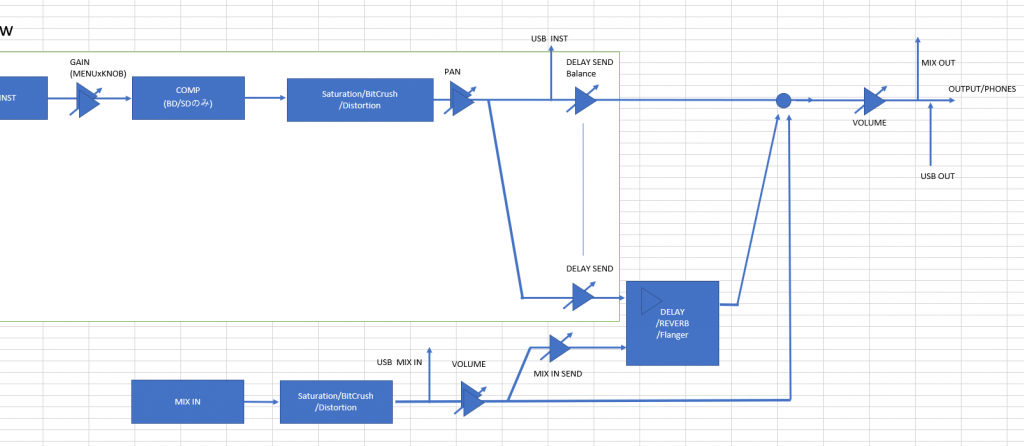
Furthermore, how did you decide which effects were important for the TR-06?
AN: We had a meeting to get advice. There are so many options in the effects library, so the choice of which to include is very important.
"Tuning is tough because it's very emotional. It's difficult to describe. Everyone's opinions are different so we have to combine them."
-Akihiro Nagata
Learning from Challenges
What were some of the hardest parts in designing the TR-06?
AN: Sound tuning is a very challenging task. We asked for feedback from a Japanese musician who is very knowledgeable about vintage synthesizers. We sometimes ask him to review our products along with our fellow employees.
Tuning is tough because it’s very emotional. It’s difficult to describe, and this can be kind of a problem. We find it every time with these requests. Everyone’s opinions are very different, so we have to combine them.

No Two Alike
What you said illustrates an important point. There is no one ideal analog sound. Ultimately, one unit can sound drastically different than another.
HN: There is a lineage to the TR-606. A listener may know just one aspect of the 606. We try to learn the history of the instrument so we can understand the whole range of sound.
Nagata, you have a rich history with Roland. Was there anything you learned working on projects like the JUPITER-X that helped with the TR-06?
AN: It’s tough because there are so many products, right? But we based the JUPITER-Xm on ZEN-Core, a very new sound engine. That path dates back to the V-synths, but the sound engine itself is a unique design.
Nagasawa, you appear in a video creating some wild sounds with the TR-06. Do you make or release music of your own?
HN: Well, I’m a hobby musician. I make tunes and I have a band.
"The miniature aspect is very important to the Boutique series. But we also want them to look to the future by adding new features."
-Hiromu Nagasawa
A Constant State of Evolution
Would you say the concept of the Boutique series is to push Roland’s products in new directions?
HN: That’s the main concept. We like them to be miniature and pretty and cute. The miniature aspect is very important to the Boutique series. But we also want them to look to the future by adding new features.
AN: Actually, I came up with this Boutique idea. [Laughs] First, we created an AIRA series. After that, we wanted to make them smaller. As Nagasawa said, we wanted to make miniature-sized collector items. These were the type of products we wanted to see lined up around our space.




